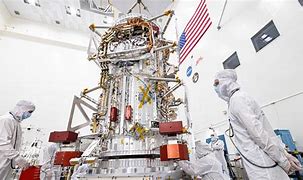Context:
Recently, the National Aeronautics and Space Administration (NASA) launched its Europa Clipper mission to explore the potential for life on Jupiter’s moon, Europa.
More on the News
- The Europa Clipper is designed to study the moon’s icy surface and the subsurface ocean believed to exist beneath.
- However, Europa Clipper will not directly search for life, but will assess whether Europa’s environment could support life on it.
- With a mission cost of $5.2 billion, it signifies a major investment in our quest to understand the potential for life beyond Earth.

About the Europa Clipper Mission
- Although the Europa Clipper mission won’t search for microorganisms, its findings may pave the way for future missions aimed at detecting life.
- It is the largest spacecraft NASA has constructed for planetary exploration, featuring expansive solar panels essential for generating power over vast distances.
- The spacecraft is approximately the size of a camper van and carries nine scientific instruments, including radar and cameras, to analyze Europa’s icy shell and map its surface.

Mission Timeline and Journey
- Traveling 1.8 billion miles (3 billion km), the Europa Clipper will take five and a half years to reach Jupiter, conducting several flybys of Mars and Earth along the way.
- It is expected to arrive in 2030 and will begin its scientific operations in 2031.
- The mission ends in 2034 with a planned crash into Ganymede, both Jupiter’s and the solar system’s biggest moon.
Future Exploration of Europa:

- The Europa Clipper mission is part of NASA’s broader efforts to explore Jupiter’s moons, complementing other missions like NASA’s Juno (orbiting Jupiter since 2016) and the European Space Agency’s JUpiter ICy moons Explorer (JUICE), launched in April 2023.
- Europa Clipper is set to arrive at Jupiter ahead of JUICE, reinforcing its pivotal role in the trio of missions focused on exploring Jupiter and its moons.
- With its advanced capabilities and strategic goals, the Europa Clipper is set to play a crucial role in expanding our understanding of one of the most intriguing celestial bodies in our solar system.
Also Read:
The surge in food prices drives September retail inflation to a 9-month High

